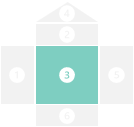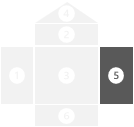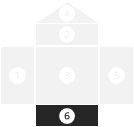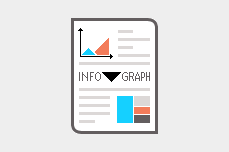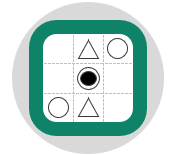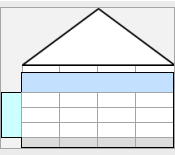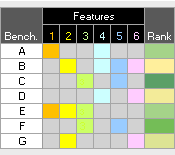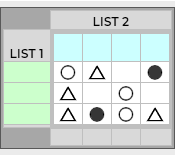
Also known as Customer-Driven Engineering.
Variants include Matrix Diagram and Voice of the Customer (VOC) Analysis.
In the dynamic realm of business, it is important to meet customer needs for achieving success. Understanding what customers want is essential for providing better products and services. When customers suggest enhancements to particular products or services, the task of selecting which to implement can be challenging. To do this, companies should include customer requirements into the product or process development cycles, translating them into design characteristics or critical-to-quality aspects.
Quality Function Deployment (QFD) is a systematic method that turns customer needs into clear technical specifications, making them understandable and actionable by the various functional areas within a company. It is a widely used technique when designing and refining products and processes, particularly in manufacturing and certain service industries. This method establishes a connection between customer requirements and product or process capabilities to ensure that customers receive what they truly desire.

QFD comes in various types, each tailored for specific applications and purposes. For example, Product QFD is designed for product development and quality improvement. It is used early in the design process to guide engineers in focusing on important design elements. Other QFD types include Service QFD which is adapted for service industries, and Competitive QFD which serves as a competitive analysis tool.

While traditionally linked to product development, QFD extends its application to process improvement, known as Process QFD. This method provides a structured approach for prioritizing improvements based on their impact on customer satisfaction and business objectives. Quality personnel can use this method to identify which Critical-to-Quality characteristics (CTQs) are of the highest importance to the customer, thereby improving existing processes for enhanced quality.
House of Quality
A key tool in QFD is the House of Quality (HoQ), which is a graphical technique that illustrates the relationship between customer requirements and product or process attributes. This diagram is named for its house-shaped appearance. It consists of multiple tables and matrices that analyze data sets according to the QFD objective. The House of Quality can play an important role in improving both the speed and quality of the QFD process, encouraging collaboration, and aiding in decision-making.


The House of Quality diagram should not be confused with Quality Function Deployment but rather as a specific component within a complete QFD exercise.
There are many versions of the House of Quality. The following highlights one of the simplest versions and focuses on the essential building blocks.
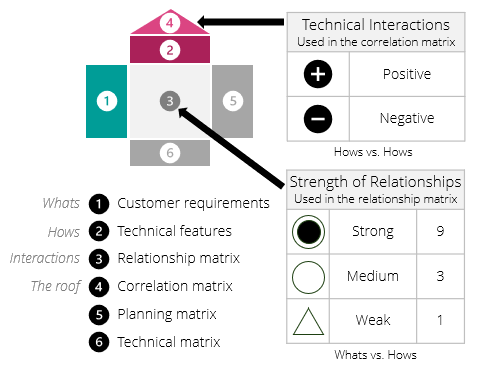
How to Build the House of Quality
QFD requires cross-functional team effort with diverse skills to collaboratively complete all elements. The following steps outline building the House of Quality. Keep in mind that this approach is an integral part of the broader QFD methodology.

- Engage with customers and collect information on their needs, preferences, and expectations through methods such as surveys, interviews, or other means.
- Guide customers in assigning relative importance to each requirement, using a scale ranging from 10 for critical importance to 1 for slight importance.
- With your team, list the customer requirements along with their relative importance on the left side of the House of Quality.
- List the technical features along the top part of the House of Quality.
- Evaluate the relationship between each customer requirement and technical feature in the relationship matrix.
- In the correlation matrix, assess the potential impact of achieving one technical feature on another.
- In the planning matrix, plan improvements based on the performance ratings of products (or processes) and customer importance ratings.
- In the technical matrix, sum up each column to determine the prioritized technical feature or CTQ characteristics.
- If applicable, conduct a competitive analysis for both customer requirements and technical features to benchmark performance.
- Updated the House of Quality diagram as new information becomes available.
Product QFD Example
Here is an illustrative example created by a car manufacturer to analyze customer requirements when purchasing a car.
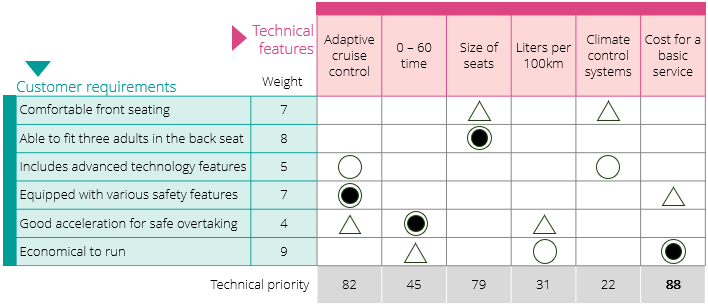
Note that this example is simple, generic, and uses only a single matrix (the relationship matrix) to demonstrate the key elements. A real example like this one would be more comprehensive and include additional customer requirements and technical features. It is often sufficient to translate the customer requirements into technical features as outlined in this example. However, a more thorough approach may be required for highly critical applications.
Process QFD Example
This partially completed example is for an online banking portal created by the information technology team of a bank to improve their online banking services.
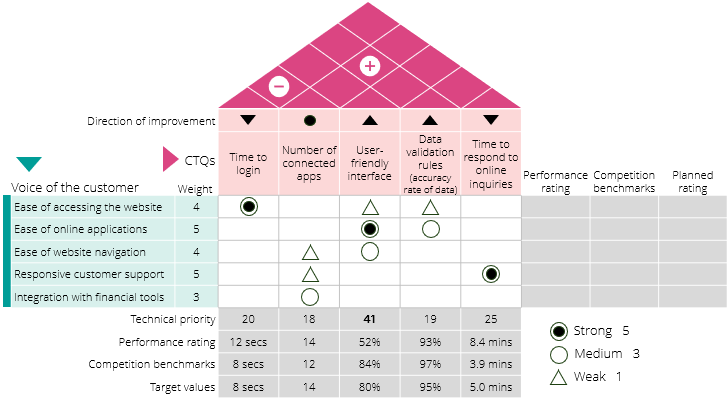
Note that the direction of improvement indicates whether increasing or decreasing a specific technical feature has a positive influence on customer satisfaction.

To help in understanding, structuring and prioritizing customer requirements and technical features, a range of other tools work alongside the House of Quality such as Kano analysis, CTQ trees, and affinity diagrams.

There are many tools available to help in creating a House of Quality diagram. One of the simplest and most straightforward methods is to use this QFD template.
Wrapping Up
QFD is a systematic tool for aligning customer needs with product or service design. It is a planning activity that reduces design cycle time, minimizing changes downstream and leading to lower costs and quicker time-to-market. It extends beyond product development to process improvement and provides a structured approach for prioritizing CTQs based on their impact on customer satisfaction. Integrating QFD into business strategies ensures the ability to meet or exceed customer needs.
References
Heizer, J., Render, P., & Al-Zu’bi, Z. (2013). Operations Management.
Lewis, G. Smallpeice. Lean – Six Sigma: Manufacturing Black Belt Program.
Brook, Q. (2020). Lean Six Sigma and Minitab: The Complete Toolbox Guide for Business Improvement.
Rob, M. Crown Holdings. Process Improvement Program.
Other Formats
Do you want to use the slides in your training courses?

Quality Function Deployment Training Material – $18.85
Related Articles
Related Templates



